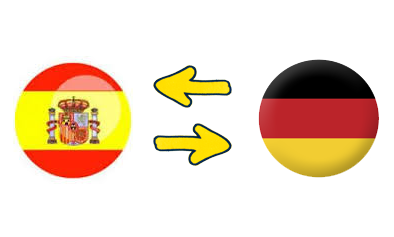When discussing Spanish to German translations, many people believe it’s simply a matter of replacing words from one language to another. However, achieving an effective translation goes far beyond that. German is a language with strict grammatical rules, long compound words, and a communication style very different from Spanish. A mistake in structure or word choice can completely alter the intended meaning.
If you’ve ever used an automatic translator, you’ve likely encountered phrases that sound unnatural or awkward in German. This happens because each language has its own peculiarities, expressions, and ways of structuring information. The key to a good translation lies in combining linguistic knowledge, cultural understanding, and experience with the type of text being translated.
The importance of structure in German translations
German relies heavily on word order to convey meaning. Unlike Spanish, where we can rearrange phrases without changing their meaning, German places verbs in fixed positions depending on the sentence type.
Another aspect to consider is the use of nouns. In German, all nouns begin with a capital letter and are assigned a gender (masculine, feminine, or neuter), which affects the grammar of the entire sentence. For example, “der Tisch” (the table) is masculine.
These details require a precise approach to German translation to avoid errors that might confuse the reader.

Why automatic translations aren’t enough
With advancements in artificial intelligence, many turn to automatic translation tools. However, these systems have limitations, especially in German translations.
For instance, a simple Spanish phrase might be translated automatically and appear correct in general terms. However, a native speaker would likely use a more natural construction.
Automatic tools lack the ability to interpret context, tone, or intent behind a message. Therefore, for important texts like contracts, technical documents, advertising content, or corporate materials, relying on a professional translator is essential.
Cultural adaptation: the detail that makes a difference in German translations
Cultural adaptation is crucial in German translations. It’s not just about translating words but ensuring the message is understandable and appropriate for the target audience.
For example, in business communications, Germans value direct and structured communication. While Spanish emails often begin with cordial greetings and introductions, German messages tend to get straight to the point.
Another important cultural aspect is the use of formal and informal language. German distinguishes clearly between formal (“Sie”) and informal (“du”) forms. In professional settings or when addressing strangers, “Sie” is used, while “du” is reserved for friends or family.
Common mistakes in German translations
Some frequent errors in German translations include:
- Incorrect use of verb tenses: German often uses the present perfect tense more frequently, which can be confusing for Spanish speakers.
- Literal translation of idiomatic expressions: Phrases like “ponerse las pilas” (get one’s act together) don’t have a direct equivalent in German and require creative adaptation.
- Errors in declension of articles and adjectives: In German, nouns change based on their role in a sentence, making incorrect translations sound unnatural or confusing.
Ensuring quality translations
To achieve high-quality German translations, it’s essential to work with professionals who are fluent in the language and understand cultural nuances. A well-executed translation respects grammar and vocabulary while adapting tone and style for the target audience.
At Max Translation, we collaborate with translators specializing in various fields, from legal and technical documents to marketing content and websites. We ensure each text flows naturally in German, conveying the message clearly and effectively.
If you require professional German translations tailored to your audience, contact us today for a no-obligation quote.



